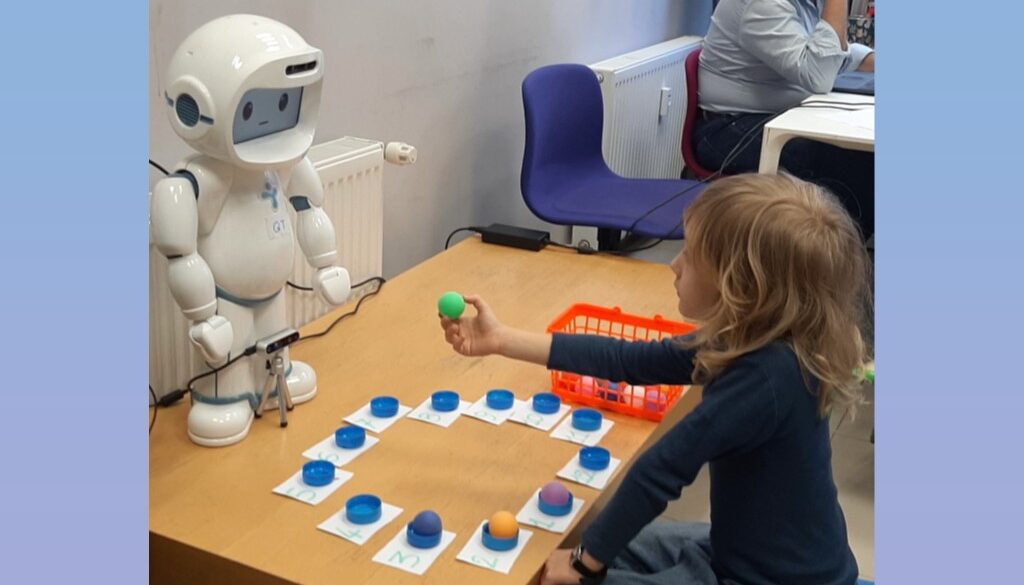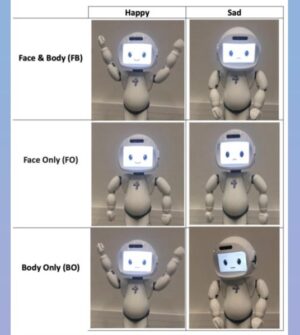
A recent study published on arXiv by Elisabetta Zibetti and colleagues explored how children perceive and respond to emotional expressions from humanoid robots — using QTrobot as the experimental platform.
Understanding Emotional Expressiveness in Robots
The research investigates a key question in child–robot interaction: Can emotional expressiveness influence children’s behavior toward a robot?
As robots increasingly take on social and educational roles, understanding how children interpret and respond to a robot’s emotions becomes crucial. The study examined whether a robot’s non-verbal emotional cues — such as facial expressions and body language — could affect children’s cooperative behavior.
Study Design
The experiment involved 22 children aged 6–11 years interacting with QTrobot, a socially expressive humanoid robot equipped with an animated face and body gestures.
In a cooperative “Necklace Task,” children worked with QTrobot to build a pattern of beads. The robot expressed happiness or sadness through its face, body, or both, depending on each trial. Researchers then observed whether the children adjusted their behavior based on QTrobot’s displayed emotion.

Key Findings
Children aligned their choices with the robot’s emotions significantly more often than by chance.
For example, when QTrobot appeared sad, children often changed their decision to please the robot; when QTrobot appeared happy, they maintained their choice.
The degree of expressiveness (face, body, or both) did not significantly change how children responded.
This suggests that even minimal emotional cues — such as a facial expression — are enough to elicit a social response from children.
Implications for Education and Ethics
This study highlights the potential of emotionally expressive robots like QTrobot to foster social engagement, empathy, and cooperative behavior among children.
At the same time, it raises important ethical considerations about influence and persuasion in child–robot interactions. Designers and educators must ensure emotional expressiveness is used responsibly — to motivate and support children, not manipulate them.
Reference:
Zibetti, E., et al. (2025). Emotionally Expressive Robots: Implications for Children’s Behavior toward Robot. arXiv:2509.25986. Read the full paper here